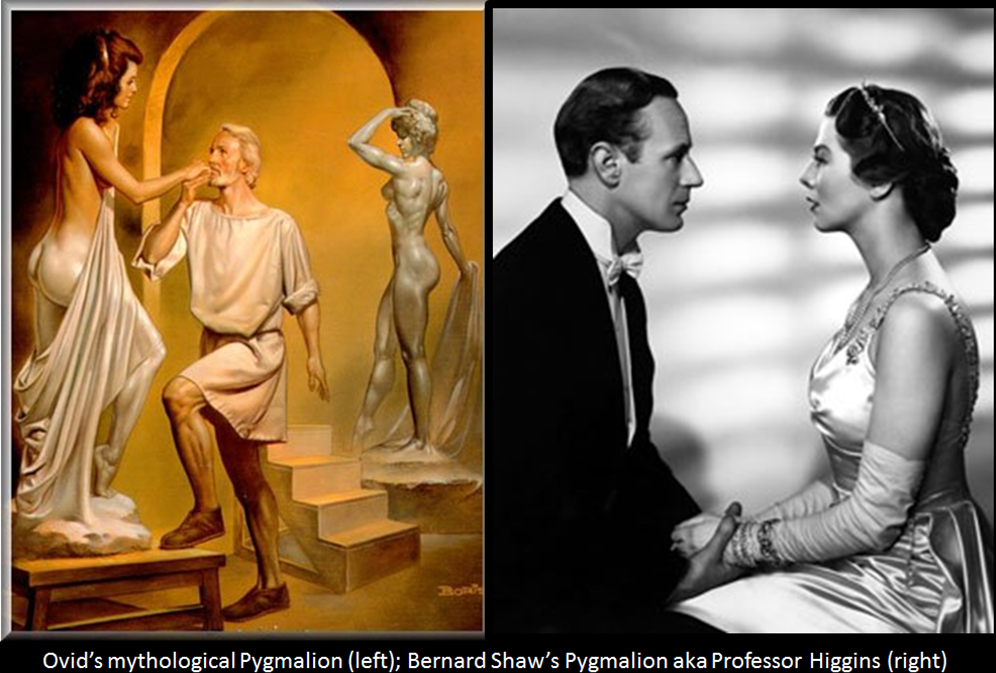
Over time, Shaw’s purpose behind this ending has been debated endlessly. The audience had conceived the idea of Henry and Eliza getting married, and could not accept this abrupt ending (Solomon 59). The play then ends with Henry mocking her idea of marrying this man (Shaw). In the end, Eliza becomes tired of Higgins’s pompous attitude as she grows independent, and leaves him to marry a typical romantic character of the middle-class.

The general public expects and practically demands a happy ending of a play that seems so highly romantic, but Shaw provides the audience with a strictly logical ending instead.


Shaw does not end the play as most would expect though. The play tracks Eliza and Higgins’s journey and the transformation of their relationship from teacher and pupil to one where both are equally accustomed to the other and have become integral parts of the others lives. Throughout the course of the play Higgins transforms her into an elegant independent woman. In Shaw’s story, Henry Higgins, an expert in phonetics, happens upon a poor flower girl with awful English and street manners named Eliza Doolittle. It is a retelling of an ancient story, of the same name, by the Roman poet, Ovid, in which a sculptor falls in love with a statue he carved. Ibsen's A Doll House.The Controversial Ending of Shaw’s Pygmalion George Bernard Shaw’s Pygmalion is a play that has become a classic in today’s world. Shaw was greatly influenced by Henrik Ibsen, who he claimed as a forerunner to his theatre of discussion or ideas. Shaw, however, revolutionized the English stage by disposing of other conventions of the well-made play he discarded its theatrical dependence on prolonging and then resolving conflict in a sometimes contrived manner for a theater of ideas grounded in realism.

Pygmalion has a tightly-constructed plot, rising conflict, and other qualities of the "well-made play," a popular form at the time. He succeeds, but Liza gains independence m the process, and leaves her former tutor because he is incapable of responding to her needs. In Pygmalion's plot, Higgins, a phonetics expert, makes a friendly bet with his colleague Colonel Pickering that he can transform the speech and manners of Liza, a common flower girl, and present her as a lady to fashionable society.


 0 kommentar(er)
0 kommentar(er)
